Choosing Your VMware Alternative
VergeIO vs. Nutanix
When considering alternatives to VMware, IT organizations commonly evaluate two leading solutions: VergeIO and Nutanix. While both deliver software-defined infrastructure, their approaches differ significantly, impacting resource utilization, operational complexity, stability, performance, and total cost of ownership.
Comparing Architectures
Understanding the core architectural differences between VergeIO and Nutanix help clarify their impacts on operational efficiency, cost, and performance. Nutanix utilizes a Controller Virtual Machine (CVM)-based architecture for storage management, whereas VergeIO integrates storage functionality directly into the operating system kernel through VergeFS, streamlining infrastructure resources.
VergeIO:
- Single-Code base, Data Center Operating System.
- Integrates storage directly into VergeOS via VergeFS, eliminating the need for separate CVMs.
- Minimal resource overhead, freeing resources for workloads.
- Simplified, predictable infrastructure management.

Streamlined VergeOS Architecture
Nutanix:
- Uses Controller Virtual Machines (CVMs) for storage management.
- CVMs consume significant resources: 16-32GB RAM and multiple vCPUs per node.
- Each layer communicates separately, causing significant strain on the network
- Added complexity in sizing and stability.
- Requires dedicated resource reservations to maintain performance during failures, reducing available capacity for workloads.
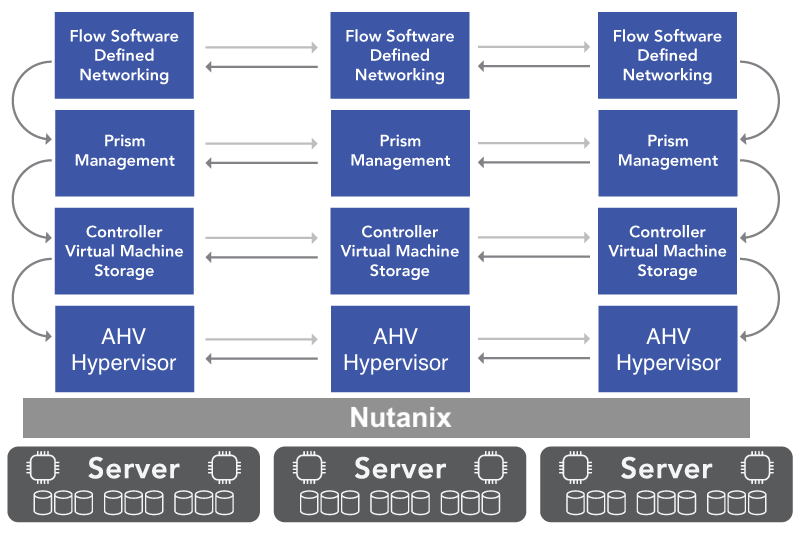
Comparing Resource Efficiency
Resource efficiency impacts the cost and capability of your infrastructure. Nutanix and VergeIO employ different approaches, which affect how resources are utilized and the resulting operational overhead.

VergeOS - Do More with Less
VergeIO:
- Direct integration optimizes resource utilization.
- Lower hardware requirements and better utilization reduce costs.
- Uses existing hardware.
- Ideal for environments seeking efficiency without compromise.

Nutanix:
- CVMs reduce available resources, resulting in increased hardware investment and operational overhead.
- Resource-intensive architecture may hinder deployments in smaller or resource-constrained environments.
- Data availability methods, including triple mirroring (RF3) and reserved capacity for node failures, consume additional resources, further reducing usable infrastructure capacity.
Comparing Stability and Reliability
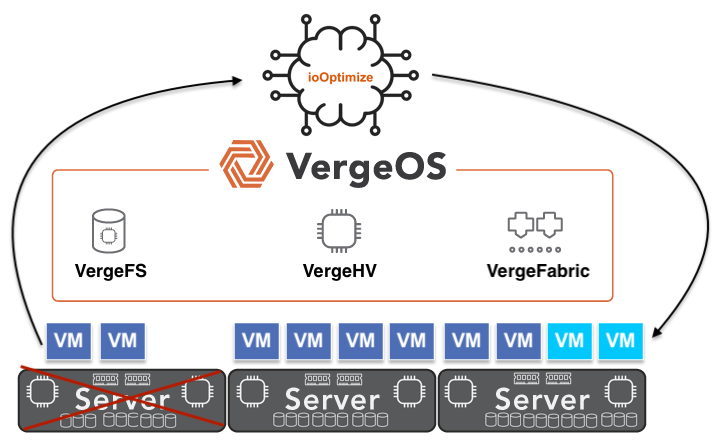
VergeIO:
- Simplified, single-code integration ensures consistent and reliable performance.
- ioOptimize: intelligent placement of VMs based on resource utilization and resource availability
- Automated, rolling code updates and no downtime.
- Minimal administrative intervention required.
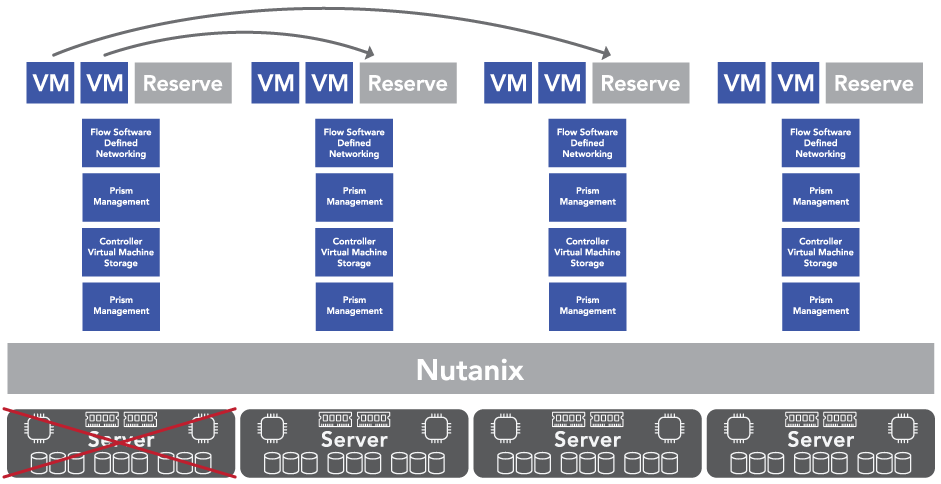
Nutanix:
- CVM stability can be problematic, leading to performance fluctuations and increased administrative complexity.
- Resource reservation required, no intelligent VM distribution during node failure. Requires an extra server for every three servers.
- Reactive troubleshooting can delay the resolution of the root cause.
Comparing Performance
VergeIO:
- Consistent, high-performance verified through transparent benchmarks:
- Over 1.5 million read IOPS.
- 23 GB/s throughput on a 25 GB/s network.
- Boot storm testing: 1,000 VMs boot in 71 seconds.
- Stable, predictable scalability and performance.
- Full transparency - watch now ->

Nutanix:
- Performance is impacted by CVM overhead and data locality complexities.
- The Nutanix stack weighs down performance
- Limited transparency in real-world performance benchmarks.
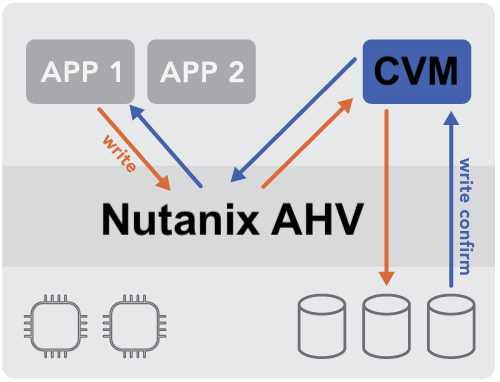
Comparing Data Availability
VergeIO:
- Utilizes ioGuardian, providing inline protection beyond traditional triple mirroring.
- Protects the enterprise against 2+ Node failures without additional mirrors
- Protects small environments economically with minimal additional hardware.
- Ensures all applications benefit from enhanced availability, eliminating workload prioritization.
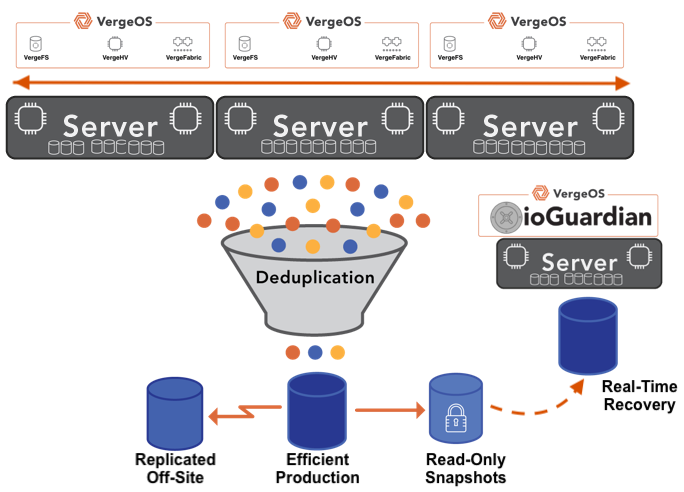
Nutanix:
- Relies on replication factor (RF3) for resilience
- Requires at least five nodes.
- Significant storage overhead with RF3. Still only protects from two node failures.
- Forces IT to prioritize certain workloads, potentially leaving others less protected.

Total Cost of Ownership
VergeIO:
- Lower TCO through reduced hardware investments and streamlined licensing.
- Optimizes existing or commodity hardware for cost-effective deployment.
Nutanix:
- Higher TCO driven by extensive hardware resource requirements, licensing, and complexity.
- Increased capital and operational expenditures.
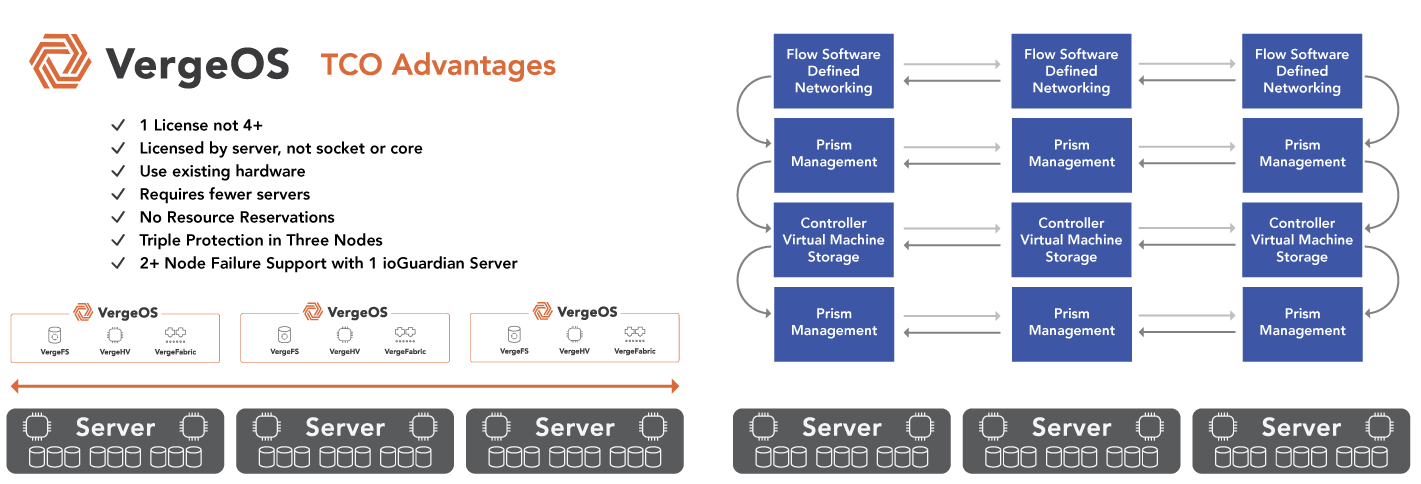
Ready to see VergeIO in action?
Request a Demo or Read our Data Availability Analysis comparing VergeIO to Nutanix.